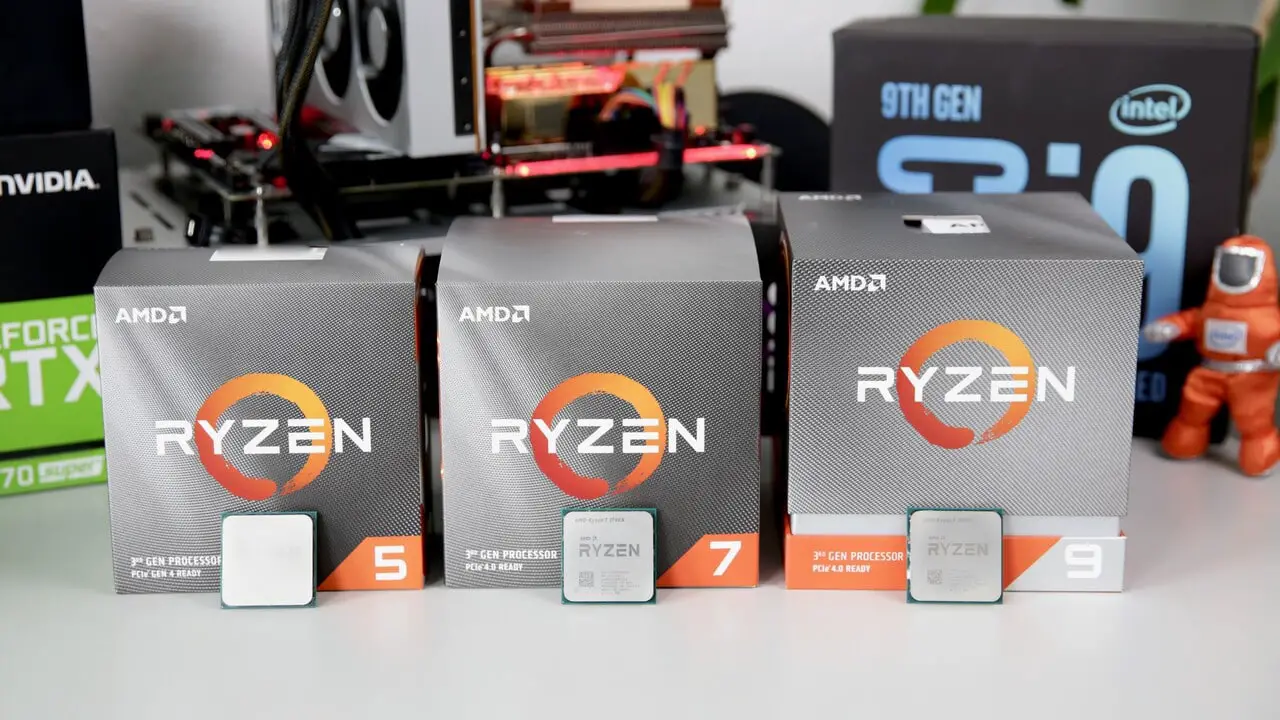– Ryzen was already king in applications, but with Ryzen 3000 Intel's supremacy in games now ends: the lead of the Core i9-9900K goes to waste. Taking into account the additional performance in apps, consumption and price, Ryzen 3000 is therefore the new ruler on the market overall.
Update 07/12/2019 04:42 p.m.
AMD Ryzen 3000 is a big hit
When AMD's new 8-core processor Ryzen 7 3700X with 65 watts TDP reaches up to six percent of Intel's fastest gaming CPUs for the frame times in the CPU limit and the Ryzen 9 3900X with its twelve cores on a two-year-old socket matches the 16th Core Threadripper from last year in applications, then there is no question: Ryzen 3000 is a big hit.
How AMD made the 3rd generation even better and how Ryzen 9 3900X (12K / 24T 105 Watts), Ryzen 7 3700X (8K / 16T, 65 Watts) and Ryzen 5 3600 (6K / 12T, 65 Watts) looked at Beat detail, the following article provides comprehensive answers. The article "AMD Radeon RX 5700 (XT) in the test: Navi is faster than RTX without super and similarly efficient" explains how the new GPUs perform.
Ryzen 9 3900X and Ryzen 7 3700X were made available to the editorial team, such as the two X570 boards from MSI and Asus and the PCIe 4.0 SSD from Corsair from AMD. The X570 motherboard from Gigabyte came directly from the manufacturer. BitcoinMinersHashrate got the Ryzen 5 3600 from another source. All CPUs correspond to the final retail variants.
Zen 2 in three paragraphs
After the first listening (Zen) two years ago and the successful revision a year ago (Zen +), Ryzen 3000, codenamed Matisse, is asking the top dog Intel with Zen 2 for the third exchange of blows in the desktop business. And while Intel has only worked on the well-known architectures and manufacturing processes in the past two years, the challenger is again offering a package of innovations that has it all: AMD not only changes to the 7 nm process, but also rolls up the structure of the CPUs completely. And because it makes it possible to implement up to 16 cores in the two-year-old AM4 socket, AMD does the same – followed by variants with 12, 8 and 6 cores.
Zen 2 makes almost everything new
The processors of the Ryzen 3000 family are the first with the new Zen 2 architecture. At its core, this is based on the original Zen design, but has undergone numerous changes to offer more performance. It starts with elementary things like jump prediction, continues with larger and faster buffers and caches and continues in the "UnCore area" like the memory controller and the PCI Express interface.
A few weeks ago, BitcoinMinersHashrate already summarized all details about the Zen-2 architecture in the report "Zen-2 Architecture: Ryzen 3000 are AMD's most powerful desktop processors". In this test, only one very special aspect is to be addressed again: the I / O chip Chiplet design.
The "stuck together" multi-chip design perfected
The I / O chip chiplet design is one of the great special features of the new CPUs. Multi-chip packages have always existed, Ryzen Threadripper is just a recent example. Chips of the same type are combined here. In contrast, AMD's approach for Zen 2 combines chips with different tasks in one package.
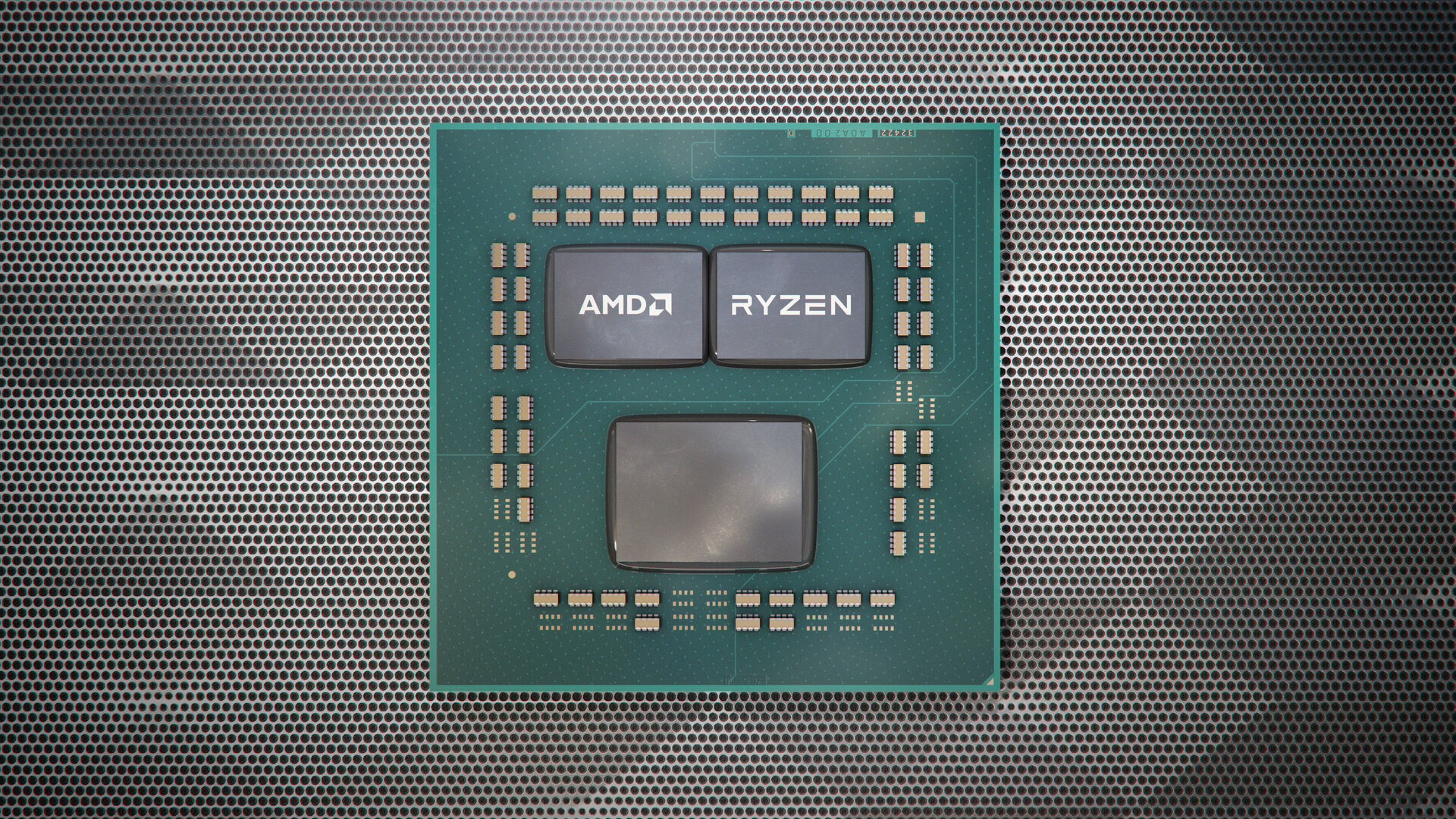
At Intel, for example, this has existed in the mobile U series for many years, there is the CPU die, the chipset and optionally also eDRAM on one package. AMD now distributes the tasks differently.
The memory controller was removed from the CPU die and packed into a separate I / O die (input-output die). In addition to the desktop PC premiere of PCI Express 4.0, it also offers other UnCore elements that the CPU does not need for the elementary “computing” function, but rather communication with the rest of the system. Eight cores are in turn in the "chiplet". Ryzen 5 3000 and Ryzen 7 3000 use one, Ryzen 9 use two – the I / O die is always identical. This makes the "sticking of chips" publicly criticized by the competitor extremely scalable: Epyc 2 with "Rome" offers 64 cores with eight chips. The fact that the individual components are always identical is a further advantage over Intel's strategy of using monolithic chips.
With Ryzen 3000, AMD has also raised other economies of scale: the 125 mm² I / O-Die with deactivated memory controller is also the X570 chipset for the mainboards; a design feeds the entire ecosystem at AMD. But while it is manufactured by the CPUs in 12 nm at Globalfoundries, it is laid out as a chipset solution in 14 nm. AMD explained that 12 nm has a more positive effect on the clock, especially from the supported memory. But exactly the memory controller is not used in the chipset anyway, so the cheaper 14 nm solution can be used.
These are the Ryzen 9, 7 and 5 at the start
The model range of Ryzen 3000, which AMD derived from the Zen-2 modular system, has been known since Computex 2019 and has not been changed. As announced, the 16-core flagship Ryzen 9 3950X with two fully active 8-core chips is not yet at the start today, it will follow in September. The Ryzen 9 3900X with two times six active cores in the chiplets is the fastest new Ryzen 3000 on the market for the time being, accompanied by two Ryzen 7 with eight cores and two Ryzen 5 with six cores – they use one of the 74 mm² and 3, 9 billion transistor heavy chip chips.
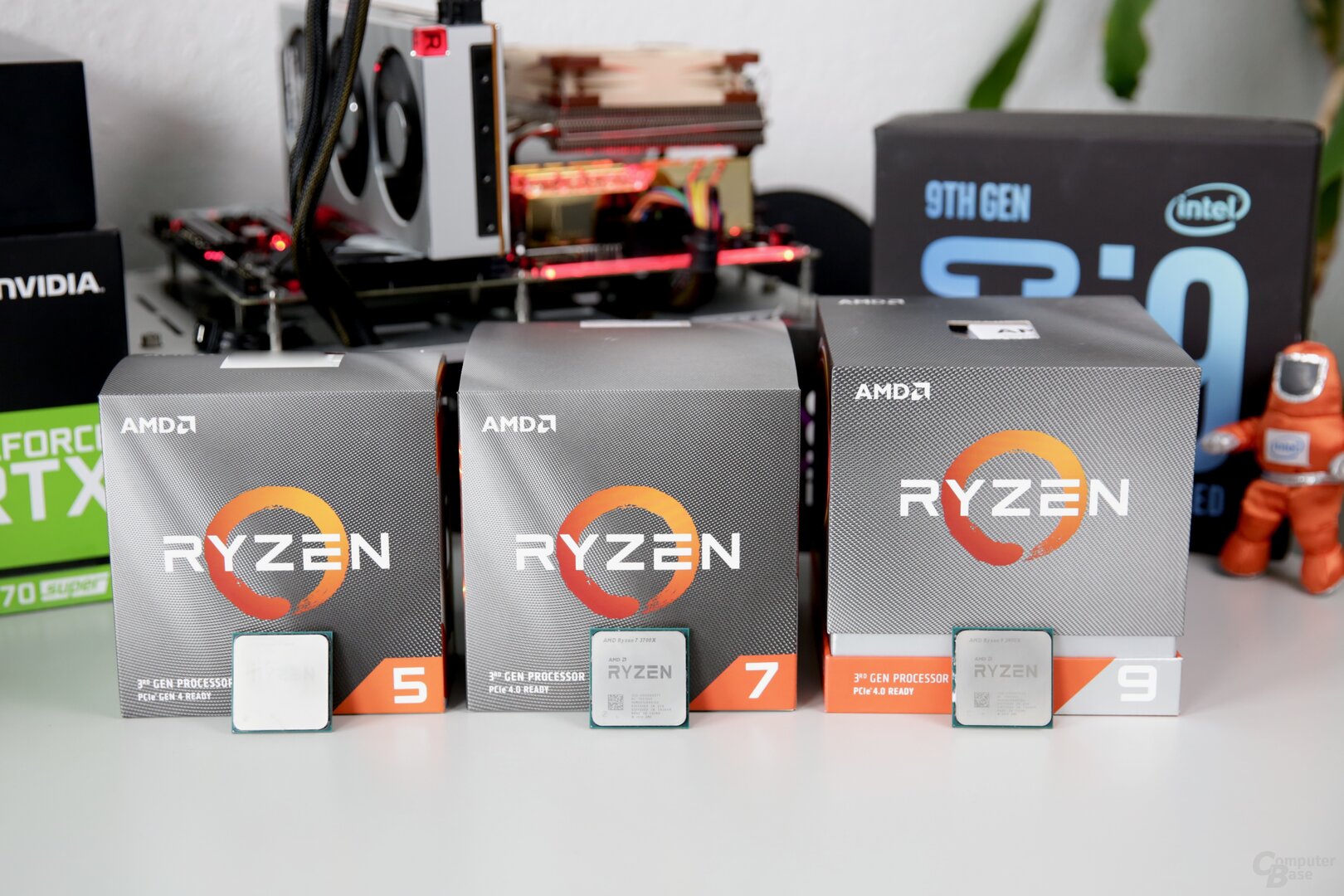
Ryzen 3000 is conquering higher price regions
With Ryzen 3000, AMD is once again occupying the upper price regions that had not existed without a Ryzen 7 2800X. For the 12-core Ryzen 9 3900X, AMD charges 529 euros – 30 euros more than for the Ryzen 7 1800X two years ago and 30 euros more than for the Ryzen Threadripper 2920X, which also has 12 cores, is currently due in stores. The new “small” eight-core Ryzen 7 3700X, at 359 euros, is only 30 euros more expensive than the Ryzen 7 2700X last year, at the market the surcharge is at least 80 euros.
There are heavy surcharges in percentage terms at the start of Ryzen 3000 for Ryzen 5, which had recently fallen sharply in price. Ryzen 5 3600 to 2600 means 85 euros, Ryzen 5 3600X to Ryzen 5 2600X even 100 euros extra.
But enough of the theory that has already been covered enough in the article "Zen-2 architecture: Ryzen 3000 are AMD's strongest desktop processors". This Ryzen 3000 test puts the benchmarks and other measurements in the foreground.
This is how Ryzen 3000 was tested
It is important to determine in advance: All Benchmarks presented in this article were newly created in June / July 2019. All Computers rely on the current Windows 10 1903 "May 2019 Update" with all current updates including all security patches, the mainboards were equipped with the latest BIOS.
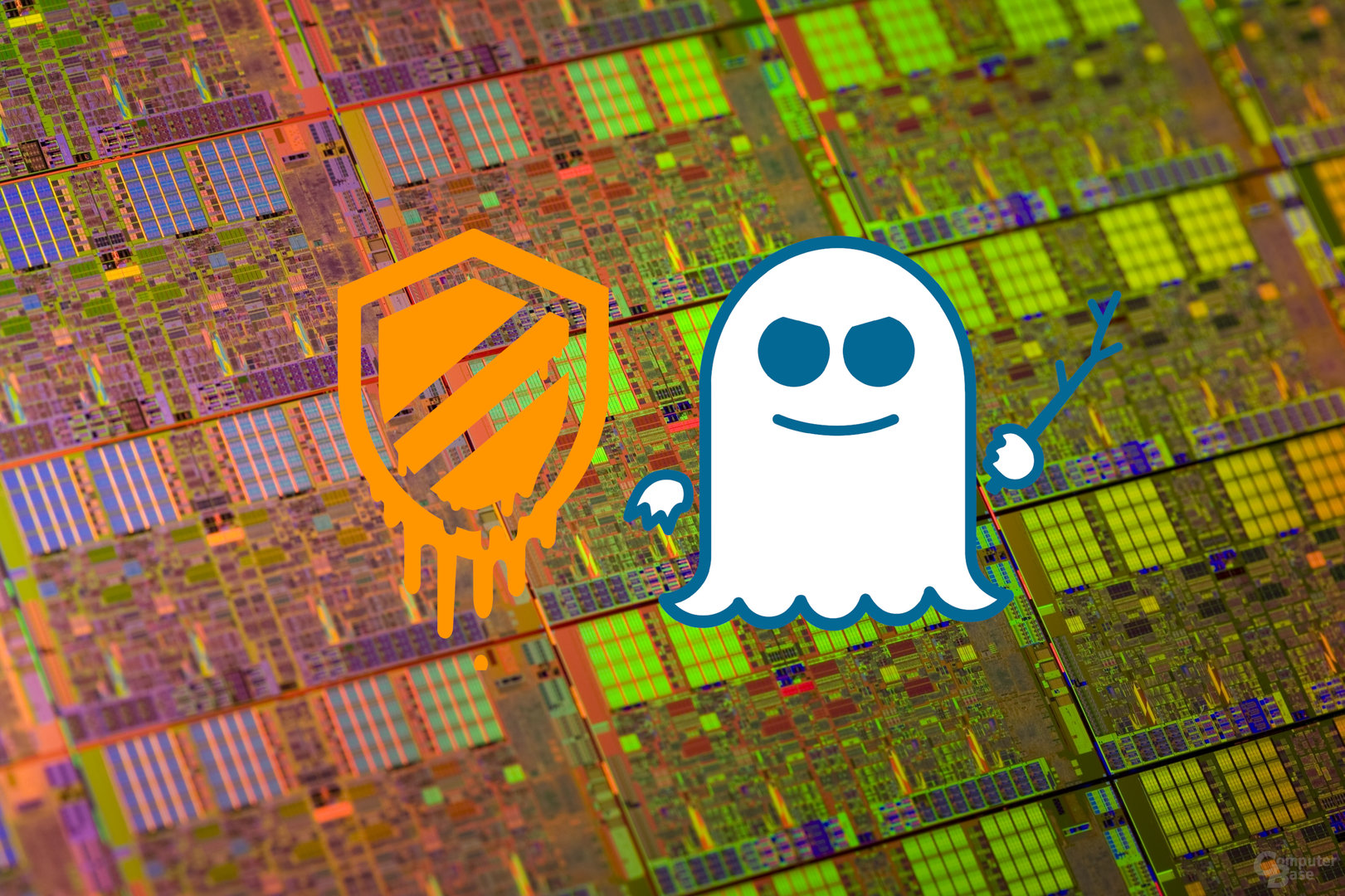
In order to avoid performance problems due to the frequent platform changes, a separate installation was used for each base. New and updated applications with multi and single core and AVX focus as well as new games in both Full HD and UHD resolution allow a comprehensive view of every processor.
As far as possible, all platforms were operated with identical memory timings, and the manufacturer's specifications were used as the RAM clock in the standard benchmarks. RAM-OC has been tested separately. The Asus Crosshair VIII Hero Wi-Fi with BIOS 0066 was used for the benchmarks with Ryzen 3000.
With AMD Ryzen Threadripper, the DLM mode was active, Intel Core X used the Turbo 3.0. The new chipset driver was used for Ryzen 3000.
The Asus Strix GeForce RTX 2080 Ti with the GeForce driver 430.97 was used in order to be able to demand the maximum CPU in the games despite high details.
A Noctua NH-U14S with two NF-A15 fans was always used as the cooler. Exceptions were the two oldest Intel platforms that were tested with the boxed fan.
Due to time constraints, not all old CPUs can be found in all benchmarks, but only in the app course.
Cache latency and throughput
A first look is at the development of memory latencies from Zen 2. From Zen to Zen +, optimizations to the internal latencies of the CPUs were one of the major architecture improvements that were particularly beneficial in games. With Zen 2 and its outsourced memory controller and significantly larger L3 cache, the question arises as to whether the architecture makes a small step back in this point.
Comparing the 8-core Ryzen 7 1800X, 2700X and 3700X CPUs on the Asus Crosshair VIII Hero Wi-Fi (X570) shows that the latency to L3 and RAM has indeed increased compared to Ryzen 2000 (+14 percent for the L3 , +12 percent for RAM), whereby the higher RAM clock rate can compensate for this in half. Due to the significantly larger L3 cache, Ryzen 3000 can intercept access to the RAM more often and has a clear advantage over Ryzen 2000 – it has to access the RAM, which is faster than Ryzen 3000, but much slower than its L3- Cache is.
It is interesting that the Ryzen 9 3900X with two chips does not have a disadvantage compared to the Ryzen 7 3700X with only one chiplet, but can even play out its slightly higher clock.
The throughput rates achieved by the three internal caches are significantly higher for all Ryzen 3000. Even the Ryzen 7 3700X is up to 100 percent faster than the Ryzen 7 2700X. The Ryzen 9 3900X is then 50 percent faster with the two chips.
In terms of latency, there is only progress with Zen 2 in the L2 cache, the higher throughput rates and the huge L3 also called “GameCache” by AMD, on the other hand, are potential strengths of the new architecture. They should be reflected in the instructions per cycle (IPC).
IPC: Zen 2, Zen + and Zen in comparison
AMD has announced an average of 15 percent higher performance per clock (IPC) for Zen 2 compared to Zen +. To live up to this promise, BitcoinMinersHashrate has the 6-core CPUs Ryzen 5 3600 (Zen 2), Ryzen 5 2600 (Zen +) and Ryzen 5 1600 (Zen) on an X570 mainboard with a fixed 3.6 GHz clock speed and exactly the same Memory timings (primary and sub-timings!) Operated with DDR4-2933 (CL14-14-14-34-1T).
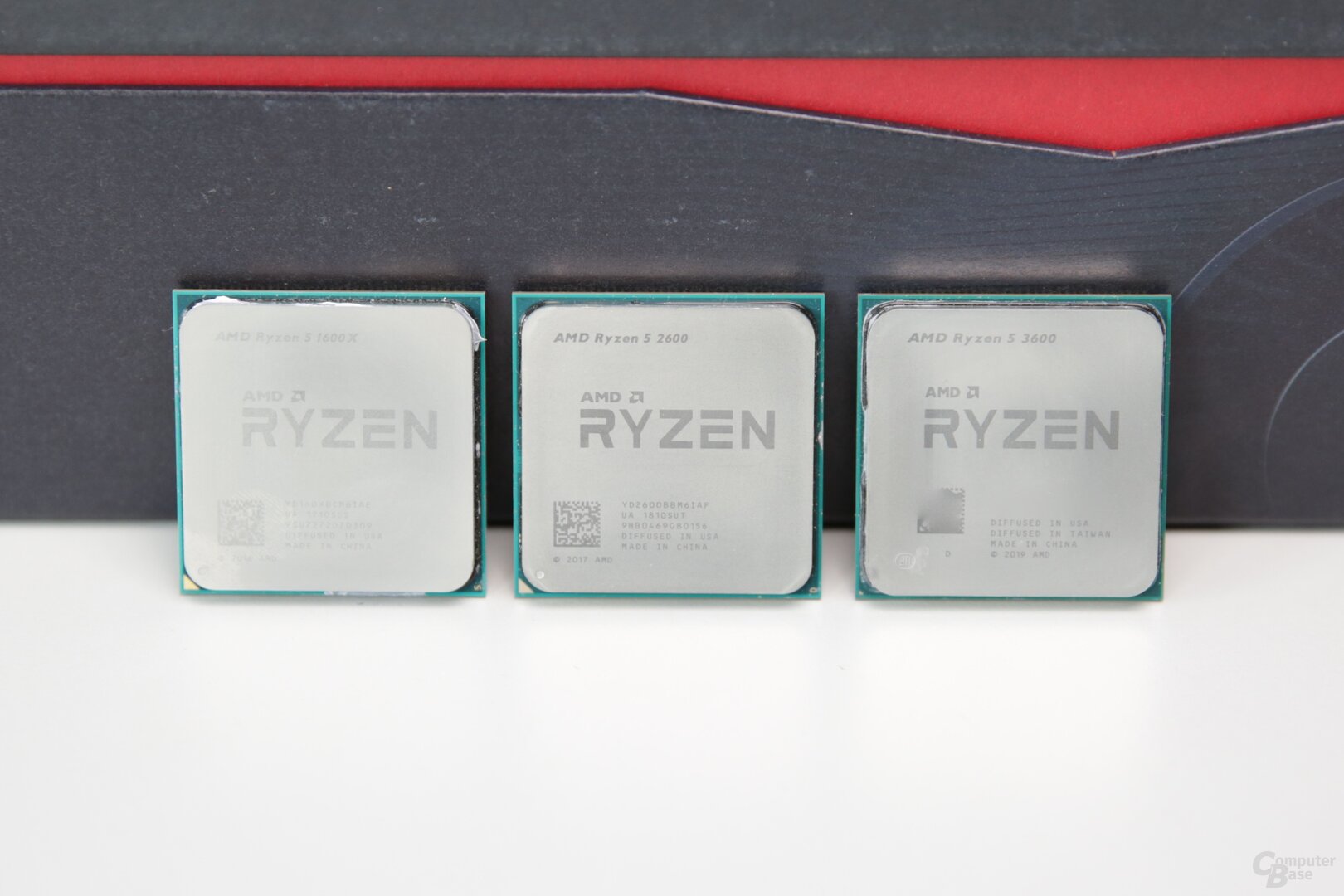
The IPC rises five times faster than from Zen to Zen +
In the editorial team's multi-core apps test course, it was actually 16 percent that separated the Ryzen 5 3600 and Ryzen 5 2600, each with six cores, and simultaneous multi-threading. The jump between these two generations is more than five times as big as that from Ryzen 1000 to Ryzen 2000 in the same course.
To edit
Performance rating applications (multi-core)
AMD Ryzen 5 3600 2933 3.6 GHz
AMD Ryzen 5 2600 2933 3.6 GHz
AMD Ryzen 5 1600 2933 3.6 GHz
To edit
Performance rating applications (single core)
AMD Ryzen 5 3600 2933 3.6 GHz
AMD Ryzen 5 2600 2933 3.6 GHz
AMD Ryzen 5 1600 2933 3.6 GHz
In the single-core apps course, the IPC gain of 14 percent is somewhat smaller, but still considerable. Zen on Zen + only gains a meager one percent on the same course.
Ryzen 3000 draws another percent of its performance from switching from DDR4-2933 to DDR4-3200, but this only applies to multi-core scenarios.
To edit
Performance rating applications (multi-core)
AMD Ryzen 5 3600 DDR4-3200
AMD Ryzen 5 3600 DDR4-2933
AMD Ryzen 5 3600 DDR4-2666
To edit
Performance rating applications (single core)
AMD Ryzen 5 3600 DDR4-3200
AMD Ryzen 5 3600 DDR4-2933
AMD Ryzen 5 3600 DDR4-2666
The advantage from Ryzen 5 3600 to Ryzen 5 2600 in applications, which will be explained in detail later, can be explained as follows:
This is an essential cornerstone for understanding the performance of Ryzen 3000. Before it goes to the classic benchmarks in apps and games, the following page will look at other very special features of the new Ryzen 3000. These include the influence of a new chipset driver on the performance and the influence of the CPU cooler.
On your own account: you read this test with activated AdBlocker? Creating it required everything from us to prepare as much information as possible for you. We would therefore be happy if you set up an exception for BitcoinMinersHashrate in the AdBlocker or if you subscribe to BitcoinMinersHashrate to support us financially. Here we explain which ads we have and why. There are no annoying popups. Promised! And now have fun reading on.
On the next page: Influence of chipset drivers and cooling





